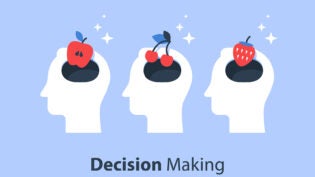Digital Advertising’s Biggest Demon
By: Ryan Healy

Ever since the advent of AdWords, fake clicks have been an insidious problem for advertisers. But today that problem is bigger than it’s ever been before.
How big?
Well, according to a new report, bot fraud is a $6.3 billion problem. That represents 14% of all money spent on digital advertising annually. Zero Hedge reports:
According to Adweek, bot fraud, digital advertising’s albatross, will suck $6.3 billion from the industry next year, according to a much anticipated report highlighting the threat from the Association of National Advertisers and WhiteOps.
Needless to say, this is important to very important for the likes of Facebook, Twitter and others, whose revenue and cashflow is entirely driven by projections of future ad spend by their clients, ad spend which will implode when after several years of being ripped off by robotic, inert eyeballs, the ad-spend budgeters decide they have had enough of being ripped off by bot farms, and put social media spending on hiatus until the social media outlets fix this issue once and for all, a fix which in practical terms is impossible.
Indeed, the problem of fake clicks, fake likes, and fake followers will never go away so long as the Internet exists. Here are some of the highlighted figures, according to analysts at SunTrust Robinson Humphreys as reported by Zero Hedge:
- Up to 50% of publisher traffic (!) is bot activity, just fake clicks from automated computing programs.
- Bots account for 11 percent of display ad views and 23 percent of video ads.
- More than half of traffic from third parties claiming to lift publishers’ traffic numbers comes from bots.
- Digital advertising will take in $43.8 billion next year, and $6.3 billion will be based on the fraudulent activity.
- Nineteen percent of retargeted ads, the ads that are directed at an intended audience based on previous Web activity, are from bots.
So what are the long-term implications of bot fraud?
Direct response marketers will most likely consider fraud nothing more than a cost of doing business. If an offer is profitable, it’s profitable—regardless of the amount of click fraud that contributed to the advertising cost.
At the same time, bot fraud could make certain forms of social media advertising unprofitable for many advertisers, at which point they’ll seek alternative avenues to spend their marketing dollars.
If fraud makes certain forms of digital advertising unprofitable, then what medium (or media) will benefit? Direct mail could be one of the primary beneficiaries. It’s not that hard to imagine advertisers turning to direct mail as they abandon online media.
Related Article: Ancient Marketing Techniques Can Yield Results
I can also imagine conversion rates being more important than ever as advertisers seek to “make up” the cost of fraudulent clicks and impressions.
But what do you think? How is bot fraud going to affect online advertising over the next 10 years? Leave a comment with your thoughts below.
This article was originally published by Ryan Healy
Published: January 9, 2015
2287 Views
2287 Views














